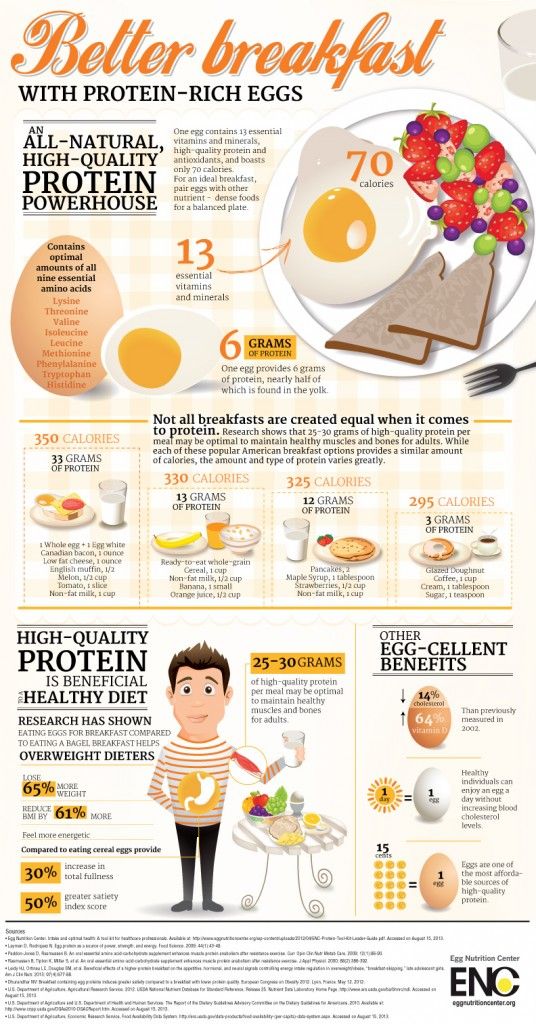
Better Breakfast


Brown eggs are not “healthier” than white eggs.
Different breeds lay different colored eggs, but there is no difference in flavor or nutritional value. In the United States, the most common production breed is the Leghorn, which lays white eggs. In many other countries, brown is the standard for store bought eggs.
Dr. Seuss wouldn’t steer you wrong.
White and brown aren’t the only colors you’ll find in the nesting box. Blue, pink, and even green eggs are also commonly found among backyard chicken breeds.
Older chickens lay bigger eggs.
Although egg size varies between breeds, as a chicken ages her eggs will increase in size. Most breeds become less productive after 2 years, but will continue to lay for 5 or 6 years.
Yolk color is affected by diet.
Although the color does not indicate nutritional value in a significant way, a rich, vibrant color is the result of a varied diet most commonly seen in pasture raised fowl.
Fresh eggs sink in water.
Not sure how fresh those eggs are? Dropped in a bowl of water, a fresh egg will sink. As an egg gets older, the air pocket inside will grow, causing it to float.
Older eggs are better for hard-boiling.
Wait a couple of weeks before boiling fresh eggs. The membrane weakens as it ages, making the egg easier to peel.
What a chicken eats affects the flavor of the egg.
Chickens will eat just about anything. This is a handy way to use table scraps, but avoid strong flavors like onions or garlic, as the flavor will carry through to the eggs they produce.
Not sure if it’s raw or boiled? Spin it!
A hard boiled egg will spin evenly. Raw eggs wobble.
Eggs are good for nursing mothers.
Packed with protein, iron and 38 other vitamins and minerals, they help meet many of the increased nutritional requirements during breast feeding.
The egg came first.
Research published in 2008 shows that dinosaurs were nesting and laying bird-like eggs well before chickens evolved from dinosaurs.
Courtesy Of: http://www.hgtvgardens.com

It doesn’t get much better than this…
Courtesy of: http://www.cherryonmysundae.com
Arrange unshelled large eggs in a pot that is wide enough to allow for a single layer. Cover eggs by 1 inch with cool water. Over medium-high heat, bring water just to a boil. Remove the pot from the heat, cover with a snug lid and set aside for 12 minutes.
Using a slotted spoon, transfer eggs to a bowl of ice water, stirring gently to cool them down. Once cooled, pat eggs dry and store in the refrigerator until ready to use, or peel immediately. Place in a large sealable jar or bowl.
Meanwhile, in a medium saucepan, combine vinegar, 1 cup water, sugar, allspice, peppercorns, mustard seeds and bay leaves, and bring to a boil. Boil 5 minutes.
Remove pickling mixture from heat, and while hot, add to the container of peeled eggs. Cover and refrigerate at least 2 days or up to 1 week (the longer eggs soak in the mixture, the more pickled flavor will intensify).
Courtesy of: http://www.wholefoods.com
Our birds have flown the coop! Or more accurately,they’ve eased on down the road to greener pastures. Ali’s Place, a major producer of free-ranged, GMO-Free/Corn Free/Soy Free pastured eggs for Rosemary Favorites, recently relocated their flock. Hen health and happiness is a priority, and moving them ensure they have the best living environment available, including delicious, nutritious green eats. Stay tuned as we share more about their new home.
Ingredients
1-2 tablespoons of butter or margarine 4 slices of ham
8 eggs
2 tablespoons of milk
1-2 drops of green food coloring 1/4 teaspoon of salt
1/4 teaspoon of pepper
What You’ll Need
knife, medium-size mixing bowl, wire whisk or eggbeater, large frying pan, spatula, aluminum foil, serving plates
1. With an adult’s help, melt a teaspoon of butter in a large frying pan over medium heat. Add sliced ham and brown until edges are slightly crisp. Remove the ham from the pan, cover with aluminum foil, and set aside.
2. In a medium-size mixing bowl, combine the eggs, milk, salt, and pepper. Beat with a whisk until frothy. Then add 1-2 drops of green food coloring until you reach the desired shade of green.
3. With an adult’s help, heat a tablespoon of butter or margarine in a large frying pan over medium heat until the butter begins to sizzle. Then add the egg mixture to the pan.
4. Stir the egg mixture with a spatula until the eggs are firm and not too runny.
5. Transfer the eggs to individual plates. Garnish with a sprig of parsley. Add the ham prepared earlier. Serve with toast or warm rolls.
Feeds 4 hungry green-egg lovers.
Courtesy of: http://www.seussville.com
Recommended Storage Times for Eggs
| Fresh shell eggs | By best before date |
| Leftover yolks or whites | Within 2 to 4 days |
| Hard-Cooked eggs | Within 1 week |
| Prepared egg dishes | Within 3 to 4 days |
| Pickled eggs | Within 1 month |
| Frozen whole eggs (blended) | Within 4 months |